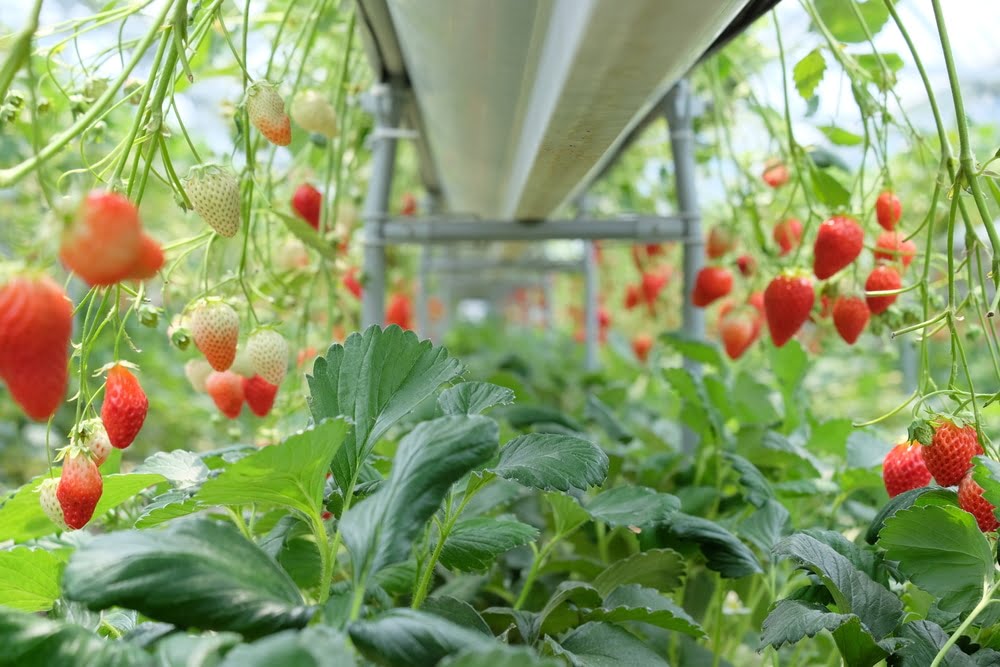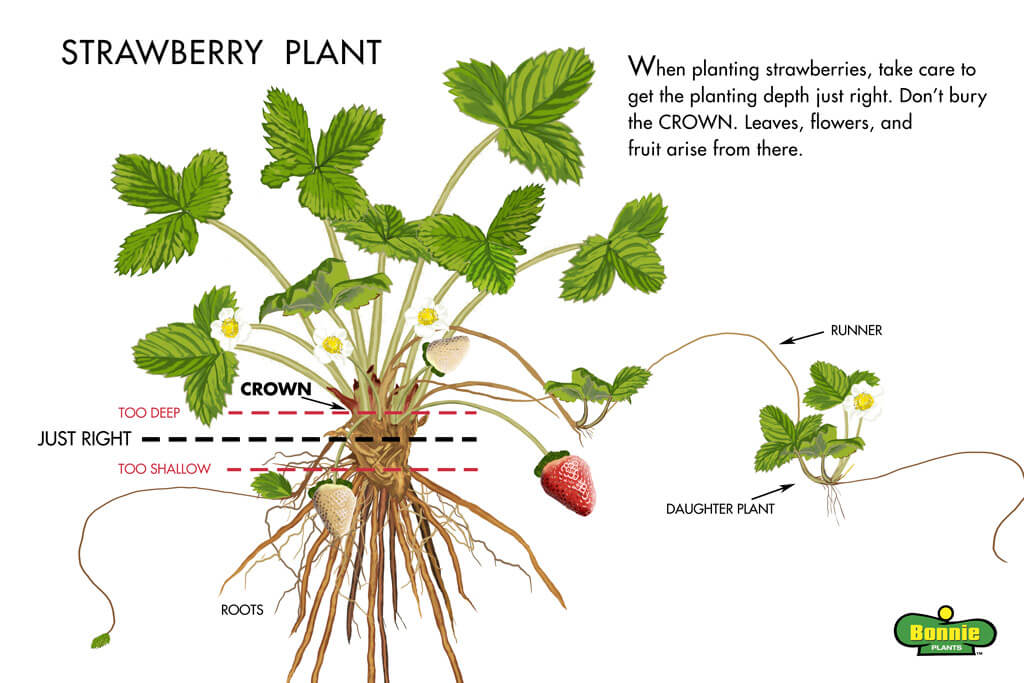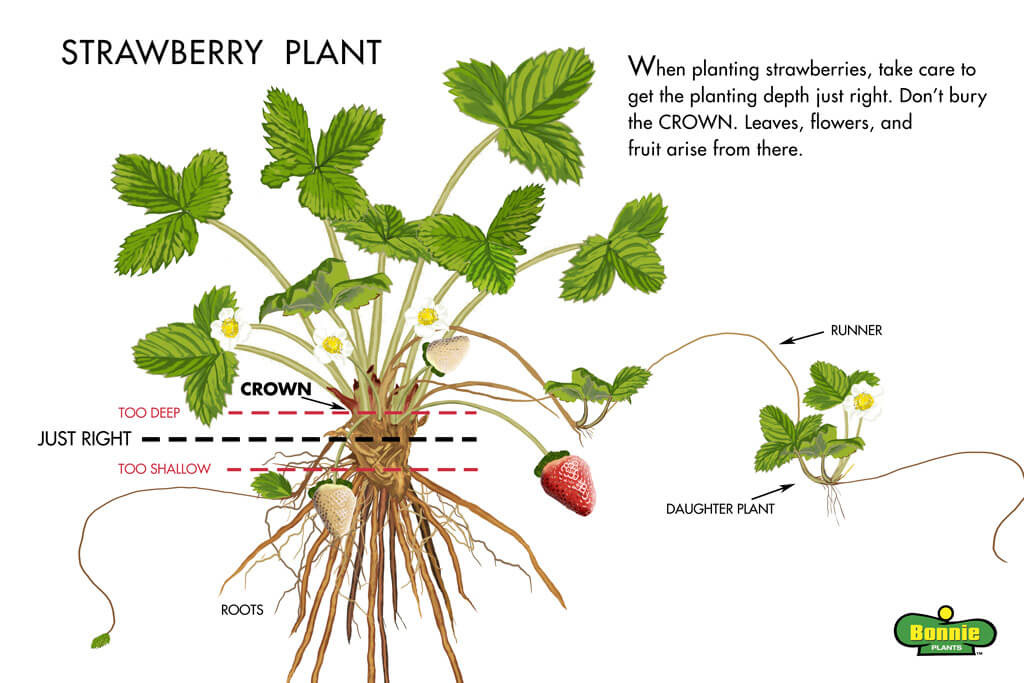Strawberries, the vibrant red fruit loved for their sweet and tangy flavor, have long been a favorite among food enthusiasts and gardeners alike. But have you ever wondered where these delicious berries thrive the most? This article aims to explore the optimal conditions for strawberry cultivation, examining factors such as climate, soil, and sunlight. Delving into the intricate world of strawberry growth, we will uncover the secrets behind cultivating the juiciest, most flavorful strawberries, and reveal the best locations to nurture these delectable fruits.

Climate requirements for growing strawberries
Temperate climate
Strawberries thrive best in temperate climates, where the average temperatures range from 60 to 80 degrees Fahrenheit (15 to 27 degrees Celsius). These temperatures provide optimal growing conditions for the plants to establish healthy root systems and produce abundant fruits.
Cold winters and mild summers
While strawberries require a temperate climate, they also need cold winters and mild summers to go through their natural growth cycles. The cold winter temperatures serve as a necessary period of dormancy for the plants, ensuring proper flower bud formation. Mild summers, on the other hand, prevent heat stress and allow for optimal fruit development.
Frost-free spring
A frost-free spring is critical for strawberry plants, as they are susceptible to frost damage. Freezing temperatures can lead to flower and fruit loss, resulting in reduced yields. Therefore, regions with a prolonged frost-free period in the spring are ideal for strawberry cultivation.
Adequate sunlight
Strawberries are sun-loving plants and require a minimum of 6 hours of direct sunlight per day for optimal growth and fruit production. Sunlight is essential for photosynthesis, which fuels the plant’s growth and development. Insufficient sunlight can result in weak, straggly plants and reduced berry size and sweetness.
Well-drained soil
Strawberries prefer well-drained soil that is rich in organic matter. The soil should have good water-holding capacity to provide consistent moisture to the plants without becoming waterlogged. Excess moisture can lead to root rot and other fungal diseases. Soil pH should be slightly acidic, ranging from 5.5 to 6.5, for optimal nutrient availability and plant growth.
Environmental conditions
Elevation and altitude
Elevation and altitude play a crucial role in determining the suitable climatic conditions for strawberry cultivation. Generally, lower elevations and altitudes are more favorable due to milder temperatures and longer growing seasons. However, some cultivars are adapted to specific higher altitude regions, allowing for strawberry production in these areas as well.
Rainfall and humidity
Strawberries require adequate but not excessive rainfall. The ideal rainfall range for strawberry cultivation is between 20 and 30 inches (50 to 75 centimeters) per year. Too much rainfall can cause waterlogging, root rot, and fungal diseases, while insufficient rainfall can lead to drought stress and reduced fruit quality. Optimal humidity levels fall within the range of 60-70%. High humidity combined with poor air circulation can promote the development of fungal diseases like powdery mildew and gray mold.
Wind exposure
While some wind exposure can be beneficial for airflow and preventing excessive humidity, strong winds can damage strawberry plants and reduce fruit quality. Planting strawberries in protected areas or providing windbreaks can help mitigate wind damage.
Soil pH and fertility
Strawberries prefer slightly acidic soil with a pH range of 5.5 to 6.5. Soil fertility is also crucial for successful strawberry cultivation. Prior to planting, it is recommended to conduct soil tests to assess nutrient levels and adjust accordingly. The addition of organic matter and regular fertilizer application can help maintain optimal soil fertility.
Pest control measures
Strawberry plants are prone to various pests, including aphids, slugs, snails, and mites. Implementing integrated pest management strategies such as crop rotation, use of pest-resistant varieties, and proper sanitation practices can effectively control pest populations. Regular scouting and early pest detection are essential for timely intervention.

Geographical regions known for strawberry cultivation
California, United States
California is one of the largest strawberry-growing regions in the world. The state’s temperate climate, long growing season, and well-drained soils provide ideal conditions for strawberry cultivation. Prominent strawberry-growing areas in California include Pajaro Valley, Camarillo, and Oxnard.
Florida, United States
Florida is another significant strawberry-producing state in the United States. The mild winters and warm, humid summers create a favorable climate for strawberry plants. The majority of Florida’s strawberry production takes place in the central and southern parts of the state.
Pajaro Valley, California
Pajaro Valley, located in Santa Cruz County, California, is renowned for its strawberry cultivation. The region’s coastal climate, with cool summers and damp marine influences, creates optimal conditions for strawberry production. Pajaro Valley produces a significant portion of California’s strawberries.
Camarillo, California
Camarillo, situated in Ventura County, California, benefits from its proximity to the Pacific Ocean, which moderates the temperatures and extends the growing season. The region’s well-drained soils and ideal climate make it a prime location for strawberry cultivation.
Oxnard, California
Oxnard, located in Ventura County, California, boasts a mild coastal climate and fertile soils, making it a prominent strawberry-growing area. The region’s proximity to the ocean provides a unique microclimate that suits strawberry plants’ needs.
Southeast Queensland, Australia
Southeast Queensland is renowned for its thriving strawberry industry. The region’s subtropical climate, with mild winters and warm summers, supports year-round strawberry production. The well-drained soils and abundant sunshine create ideal conditions for cultivating high-quality strawberries.
Europe: United Kingdom, Poland, and Spain
Various European countries have significant strawberry cultivation. In the United Kingdom, strawberries are grown in open fields as well as under protective covers to extend the growing season. Poland and Spain are also major strawberry producers, benefiting from their favorable climates and well-suited soils.
South Korea
South Korea has emerged as a major strawberry-producing country, with its strawberry industry expanding rapidly. The country’s relatively cold winters and temperate summers provide an environment conducive to strawberry cultivation. The region of Nonsan is particularly renowned for its strawberries.
Japan
Japan has a long history of strawberry cultivation, with various regions known for their strawberry production. The cool climate in northern Japan and the milder climate in southern regions create diverse growing conditions suitable for different strawberry varieties.
China
China is one of the largest producers of strawberries globally. The country’s vast land area encompasses various regions suitable for strawberry cultivation, including provinces such as Shandong, Guangdong, and Zhejiang. The diverse climates and fertile soils contribute to China’s successful strawberry industry.
Growing strawberries in containers or gardens
Containers for growing strawberries
Growing strawberries in containers is a popular option, particularly for those with limited space or poor-quality soil. Containers should have sufficient drainage holes to prevent waterlogging. Strawberries can be grown in traditional pots, hanging baskets, or tower planters, allowing for vertical gardening. It is important to choose appropriate container sizes and provide adequate sunlight and regular watering.
Raised garden beds for strawberries
Raised garden beds offer several advantages for strawberry cultivation, including improved drainage, better soil quality, and easier pest control. The raised beds should be filled with well-amended soil rich in organic matter. Proper spacing between plants and regular irrigation can help maintain healthy plants and maximize yields.
Hanging baskets for strawberries
Hanging baskets provide a unique and space-saving solution for growing strawberries. They are suitable for balcony gardens or areas with limited ground space. The baskets should be filled with a well-drained potting mix, and regular watering is essential to prevent the soil from drying out. Choosing a trailing or cascading strawberry variety is ideal for hanging baskets.
Vertical gardening for strawberries
Vertical gardening is an innovative method for growing strawberries in limited space. Using specially designed vertical systems, such as towers or wall-mounted planters, allows for multiple layers of strawberry plants. This technique maximizes vertical space while ensuring adequate sunlight exposure and efficient use of water.
Hydroponic systems for strawberries
Hydroponic systems provide an alternative method for strawberry cultivation, particularly in areas with limited arable land. Strawberries grown hydroponically rely on nutrient-rich water solutions instead of soil. This method allows for precise control over nutrient levels, water availability, and temperature, resulting in increased productivity and potentially higher-quality fruits.

Challenges and considerations for growing strawberries
Plant diseases and pests
Strawberries are susceptible to various diseases, including fungal infections like gray mold and powdery mildew, as well as viral diseases. Implementing proper sanitation practices, crop rotation, and regular scouting can help reduce disease incidence. Additionally, pests such as aphids, slugs, and mites can damage strawberry plants and fruits. Integrated pest management strategies incorporating biological controls and appropriate pesticide use can effectively manage pest populations.
Frost and cold protection
Strawberry plants can be sensitive to frost and cold temperatures, especially during the flowering and fruiting stages. Protective measures such as using row covers, cloches, or frost blankets can help shield the plants from frost damage. Additionally, selecting frost-tolerant cultivars and planting in sheltered areas can help mitigate the risk of frost injury.
Water management
Proper water management is crucial for successful strawberry cultivation. Irrigation should be provided evenly and consistently, avoiding both excessive moisture and drought stress. Drip irrigation systems or soaker hoses are recommended to deliver water directly to the plant roots while minimizing leaf wetting. Mulching can help retain soil moisture and reduce weed competition.
Nutrient requirements
Strawberries have specific nutrient requirements for optimal growth and fruit production. Regular soil testing is essential to assess nutrient levels and adjust fertilizer applications accordingly. Nitrogen, phosphorus, and potassium are the primary macronutrients needed, while secondary and micronutrients should also be considered. Organic fertilizers or slow-release formulations can provide a steady supply of nutrients throughout the growing season.
Crop rotation and pest control
Implementing crop rotation is important for minimizing disease and pest pressure in strawberry production. Planting strawberries in the same location for consecutive years can lead to a build-up of soilborne pathogens and pests. Rotating with unrelated crops can disrupt pest life cycles and reduce disease incidence. Proper disposal of crop residues and thorough cleaning of equipment can also help prevent disease spread.
Best strawberry varieties for different regions
Day-neutral strawberry varieties
Day-neutral strawberry varieties are suitable for regions with mild climates and longer growing seasons. These varieties produce fruits throughout the growing season, regardless of day length. Popular day-neutral varieties include ‘Albion,’ ‘Seascape,’ and ‘Quinault.’
June-bearing strawberry varieties
June-bearing strawberry varieties are well-suited for temperate regions with distinct seasons. These varieties produce a bountiful crop of strawberries over a 2 to 4 week period in late spring or early summer. Common June-bearing varieties include ‘Chandler,’ ‘Earliglow,’ and ‘Honeoye.’
Everbearing strawberry varieties
Everbearing strawberry varieties are suitable for various climates, including temperate and cooler regions. They produce two main crops: one in early summer and another in early autumn. ‘Seascape,’ ‘Tristar,’ and ‘Ozark Beauty’ are popular everbearing varieties.
Alpine strawberry varieties
Alpine strawberries are small, intensely flavored berries typically grown for their ornamental value. They are well-suited for cooler climates and can tolerate partial shade. ‘Mignonette’ and ‘Yellow Wonder’ are common alpine strawberry varieties.
Hybrid strawberry varieties
Hybrid strawberry varieties are the result of crossbreeding different strawberry types, creating unique characteristics. These varieties often combine desirable traits such as disease resistance, high yield, and excellent flavor. Examples of hybrid strawberry varieties include ‘Ruby June,’ ‘Cambridge Favourite,’ and ‘Elsanta.’
In conclusion, growing strawberries successfully requires specific climate conditions, adequate environmental considerations, and the selection of appropriate cultivation methods. Different regions worldwide are known for their thriving strawberry industries, each benefiting from unique climatic factors and suitable soils. Considering the challenges and best practices for strawberry cultivation, as well as selecting appropriate varieties for specific regions, can lead to the successful production of this beloved and nutritious fruit.




